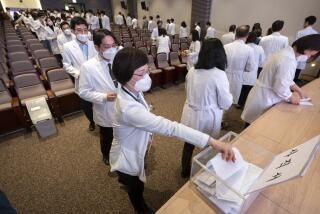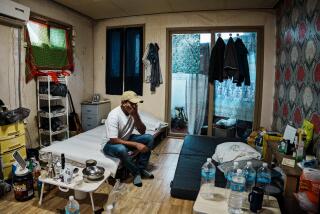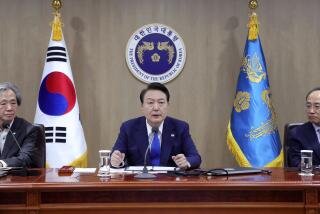The mentally ill. The disabled. The elderly. The coronavirus hit hardest where the frail gathered
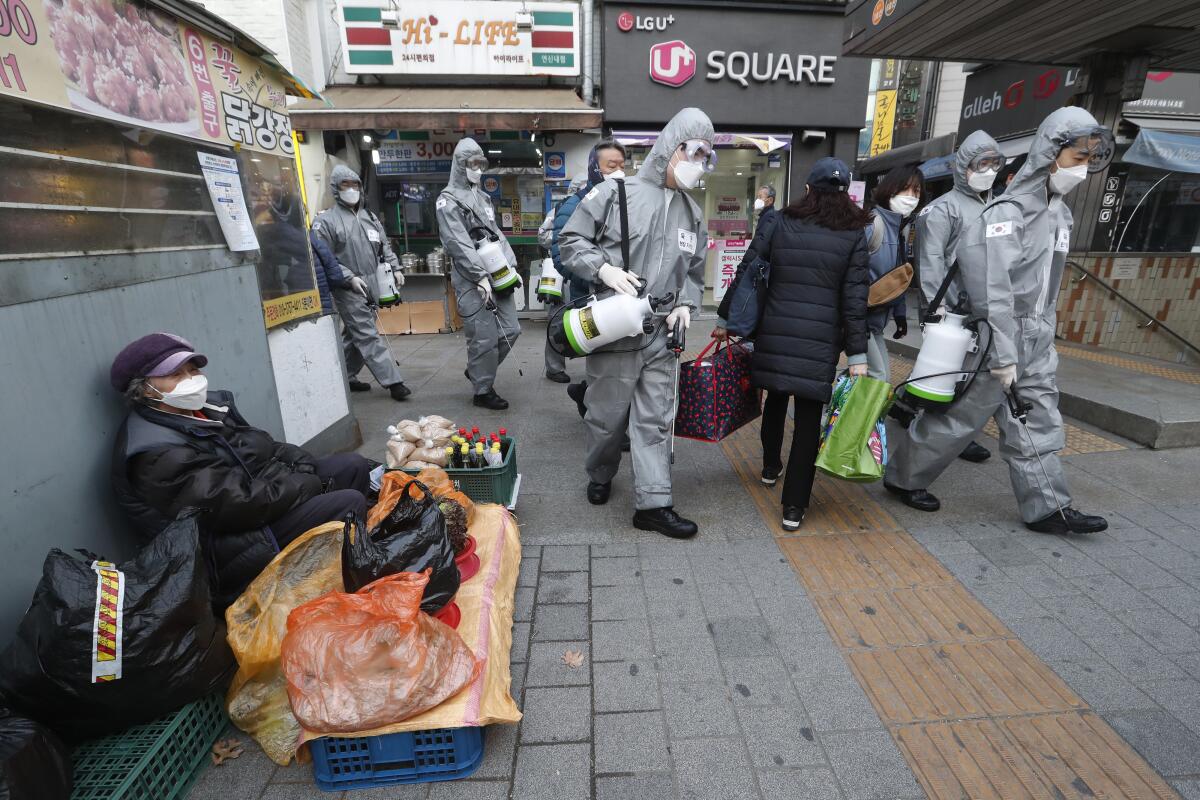
- Share via
SEOUL — But for the notoriety of the killer that claimed his life, the 63-year-old man’s death at a rural hospital may have gone completely unnoticed.
After two decades confined to a psych ward, he had no known family, friends or other ties to the outside world — no one to be notified, no one to mourn or claim his ashes. At just over 90 pounds at the time of his passing, the man, whose name has not been disclosed, barely took up any space in this world.
His lonely death in the early hours of Feb. 19 became a matter of urgent public interest when he was posthumously confirmed to have the novel coronavirus, becoming the first killed by the illness in South Korea. Six others who’d been housed alongside him at the psych ward at the private Cheongdo Daenam Hospital in the country’s southeast, all in their 50s and 60s, also died within days. Of 102 patients in the psych ward, 100 had contracted the deadly virus.
Authorities haven’t determined how the virus made its way into the locked ward, but once it got there, it found easy prey in patients with weakened immune systems living in close, poorly ventilated quarters.
As South Korea has scrambled to contain a surge of infections that has topped 7,300 and killed 50 in recent weeks, the virus has in particular seeped into the spaces where society’s most frail are gathered or institutionalized — the elderly, the mentally ill, the disabled.
The virus overtook a group home for the disabled in the small southeastern town of Chilgok, infecting a third of its 69 residents and staff, then another in the nearby city of Daegu, the country’s fourth largest city. Pockets of infections were discovered at convalescent hospitals and at nursing homes for the elderly in Gyeongsan, Bonghwa and Cheongdo.
Senior centers across the country abruptly shut their doors after three of those who frequent a center in downtown Seoul tested positive for the virus. They had eaten at the cafeteria and interacted at the center, a public facility where many senior citizens take regular classes and spend their days.
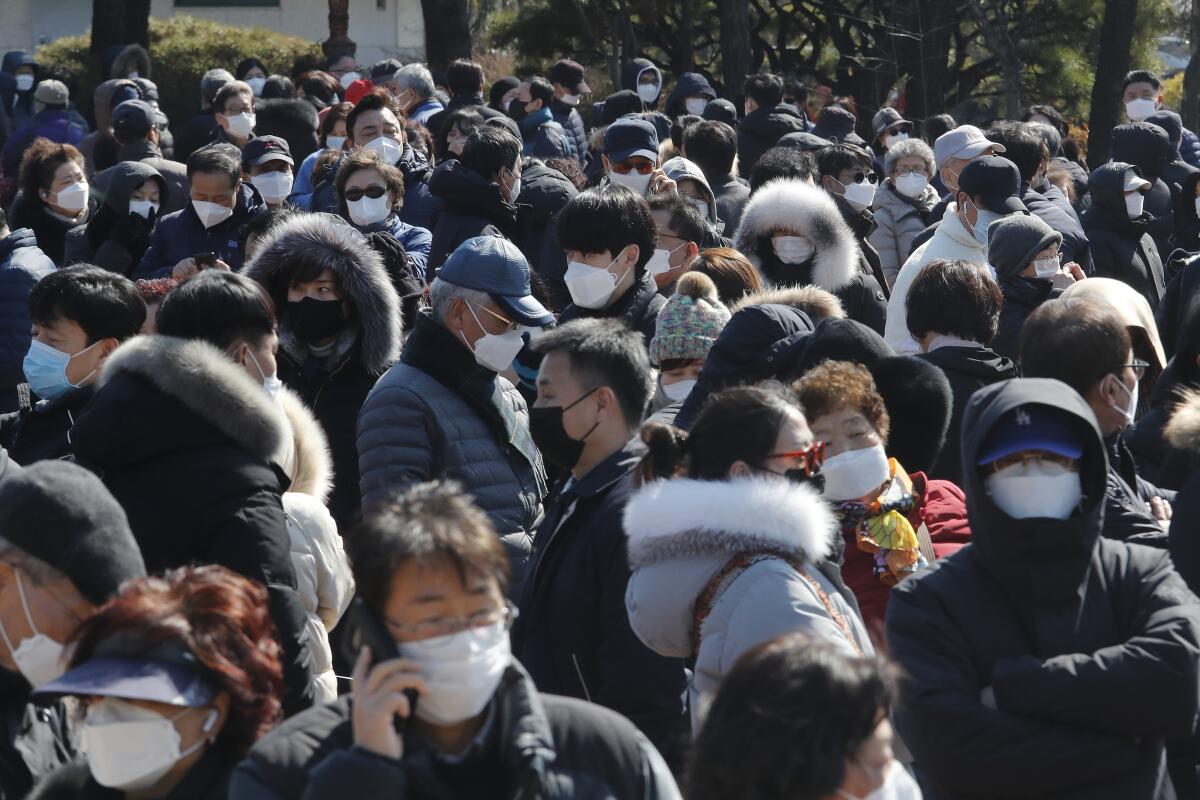
It’s a similar threat to that dawning on the U.S., as an unfolding outbreak at a nursing home in a Seattle suburb has killed more than 10 and infected dozens of others. Nursing homes across the U.S. and the millions who live in them, as well as their relatives, are on edge.
The elderly and those with underlying conditions are particularly vulnerable to the virus, which has killed more than 3,800 worldwide and spread to more than 109,000 people in more than 100 countries.
In China, where the vast majority of the deaths have occurred, doctors reported fatality rates of nearly 15% for those 80 years of age or older, compared with 2.3% overall. Those with existing heart disease, diabetes or respiratory problems have also been several times more likely to die.
Facilities and institutions where the already weakened are living in close quarters are ideal breeding grounds for pathogens in the best of times.
But calamities — epidemics, natural disasters and wars — have a way of further exposing society’s fault lines. The current outbreak raging across South Korea, some activists and advocates say, is an overdue wake-up call casting light on the country’s reliance on institutionalization as a way of caring for its most vulnerable and forcing a reckoning on the conditions in which they are housed.
“It’s not the virus that’s cruel to the weak,” a South Korean newspaper posited recently. “It’s our society, civic groups say, that’s shoved them into isolated environments ideal for the virus to thrive.”
The psych ward in the hospital where seven have died and nearly all patients have been infected has in particular raised alarm, as photos and details emerged about how patients have lived for decades with little prospect of healing or leaving.
A task force of physicians at South Korea’s National Medical Center overseeing the response to the coronavirus outbreak said the ward had no beds, with patients spending most of their days on thin futons on the floor — not a typical standard of care for South Korea.
Many of the patients were found to be malnourished, had issues with hygiene and atrophied muscles from rarely, if ever, having left the hospital for a decade or two, the task force reported last month.
Making matters worse, ventilation was dismal because of windows being sealed to prevent suicides.
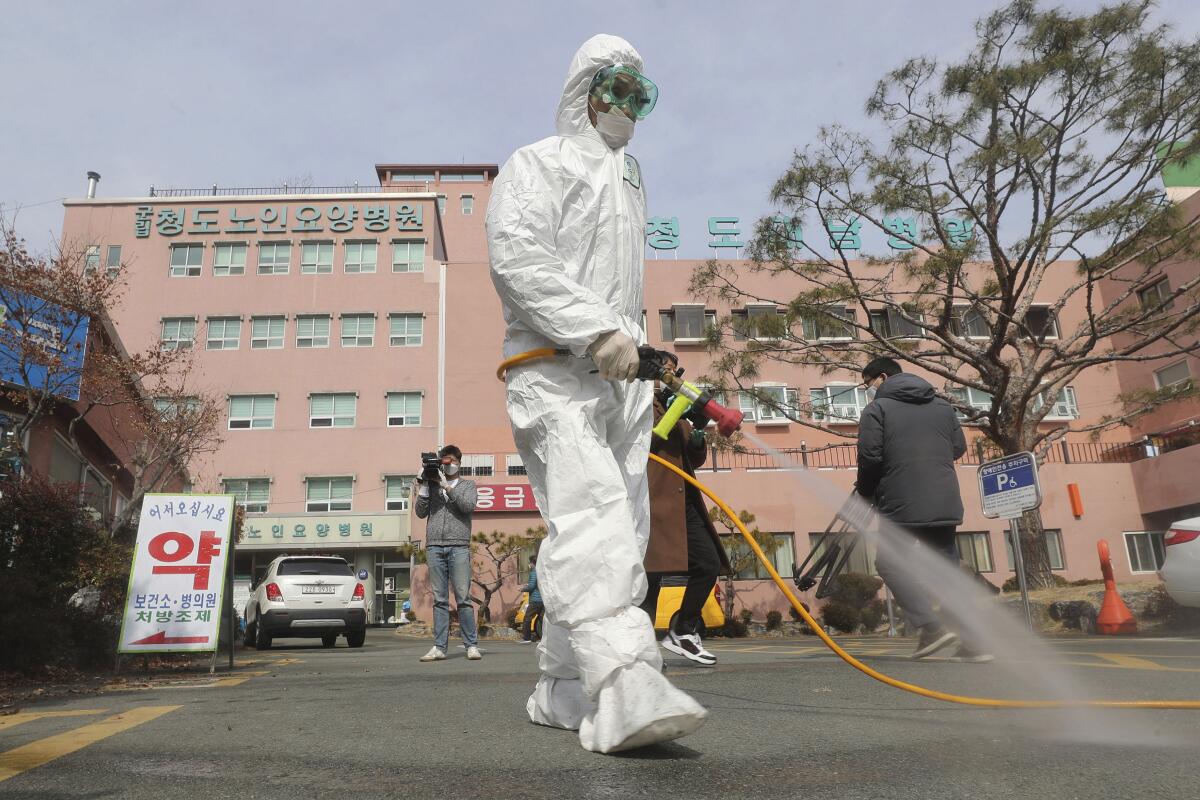
“It was characteristically a condition for the virus to rapidly spread once it got in,” Lee So-hee, head of psychiatry at the National Medical Center, told reporters. “Conditions at Cheongdo Daenam Hospital were particularly bad.”
As the extent of the outbreak became apparent, an alliance of advocates for the disabled lodged a petition with the National Human Rights Commission of Korea decrying conditions, saying other locked facilities housing the sick, disabled and mentally ill were themselves ticking time bombs. There were more than 1,500 group homes for the disabled in South Korea as of 2018.
“We need to examine society’s abuse of having branded the mentally disabled as dangerous and locked them up en masse,” the group Solidarity Against Disability Discrimination said in a statement. “We pray for the deceased who were only freed of the locked ward in death.”
Advocates say these vulnerabilities had surfaced in 2015, amid a local outbreak of the Middle East respiratory syndrome, which killed 38 in South Korea. A coalition of groups working with the disabled sued the government alleging discrimination, saying two disabled patients were forced into quarantine after possibly having come into contact with the infected at a hospital without consideration for their severe disabilities.
“The government is responsible for this reality in which the disabled are disproportionately affected in a time of disaster,” said Park Kyung-seok, a longtime advocate who heads the group.
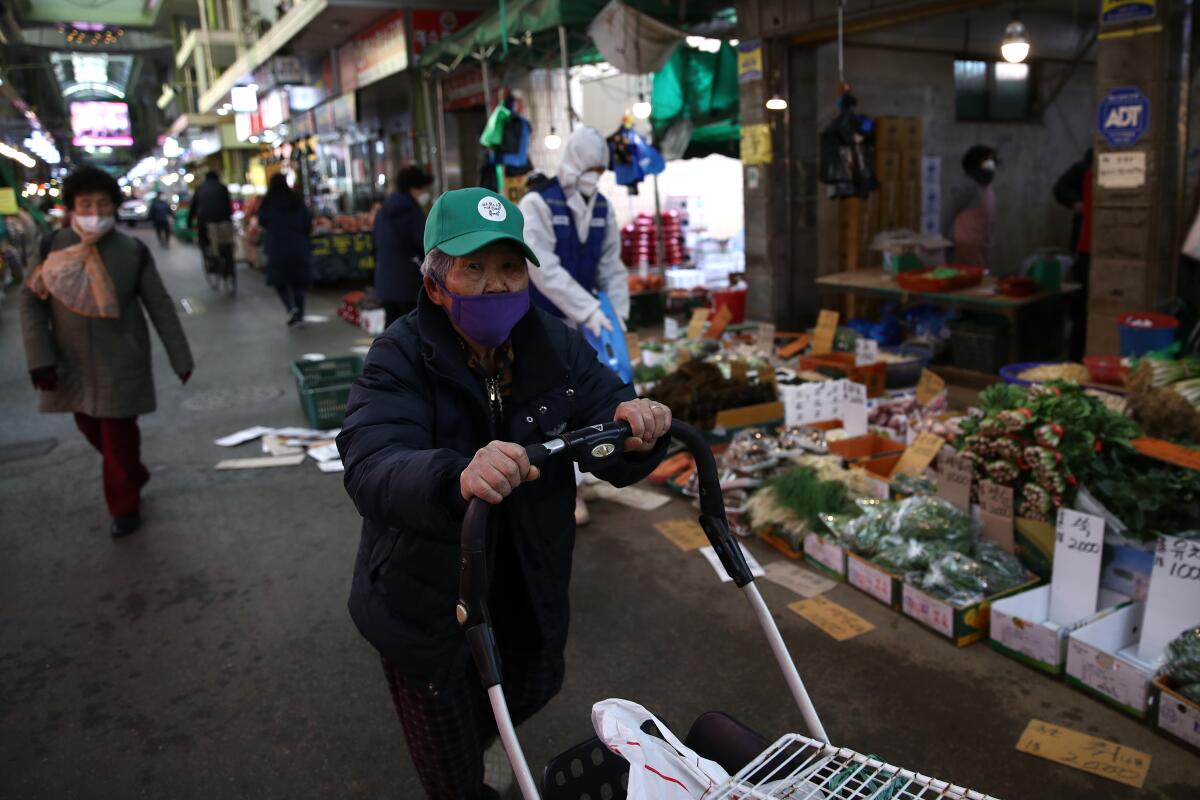
Those who work with South Korea’s rapidly increasing elderly population — the fastest growing in the world — were also on high alert as infections in the country soared. Of the fatalities, more than 80% were at least 60 years old.
Authorities last week discovered a cluster of more than 50 patients and staffers infected with the novel coronavirus at a convalescent hospital in Bonghwa County, a mountainous area in the east of South Korea. The average age of the infected, many of whom are seriously ill although none have died, is 88.
Chun Yong-man, president of the Korea Assn. of Senior Welfare Centers, said many of South Korea’s elderly are housed in convalescent hospitals focused on medical treatment rather than nursing homes centered on quality of life. Those hospitals are less regulated and understaffed, making them especially vulnerable to a situation such as the coronavirus epidemic, he said.
“Of course, the care is inadequate and they’re vulnerable to the dangers of a virus like this,” he said. “We’re all on edge.”
Kim Dong-bae, professor emeritus of social work at Yonsei University, said many of South Korea’s elderly were probably also suffering from an information gap, being less able to navigate the internet and social media for accurate information about how to keep safe.
“People are telling me, they haven’t felt this frightened or endangered since the Korean War,” said Kim, who is 70.
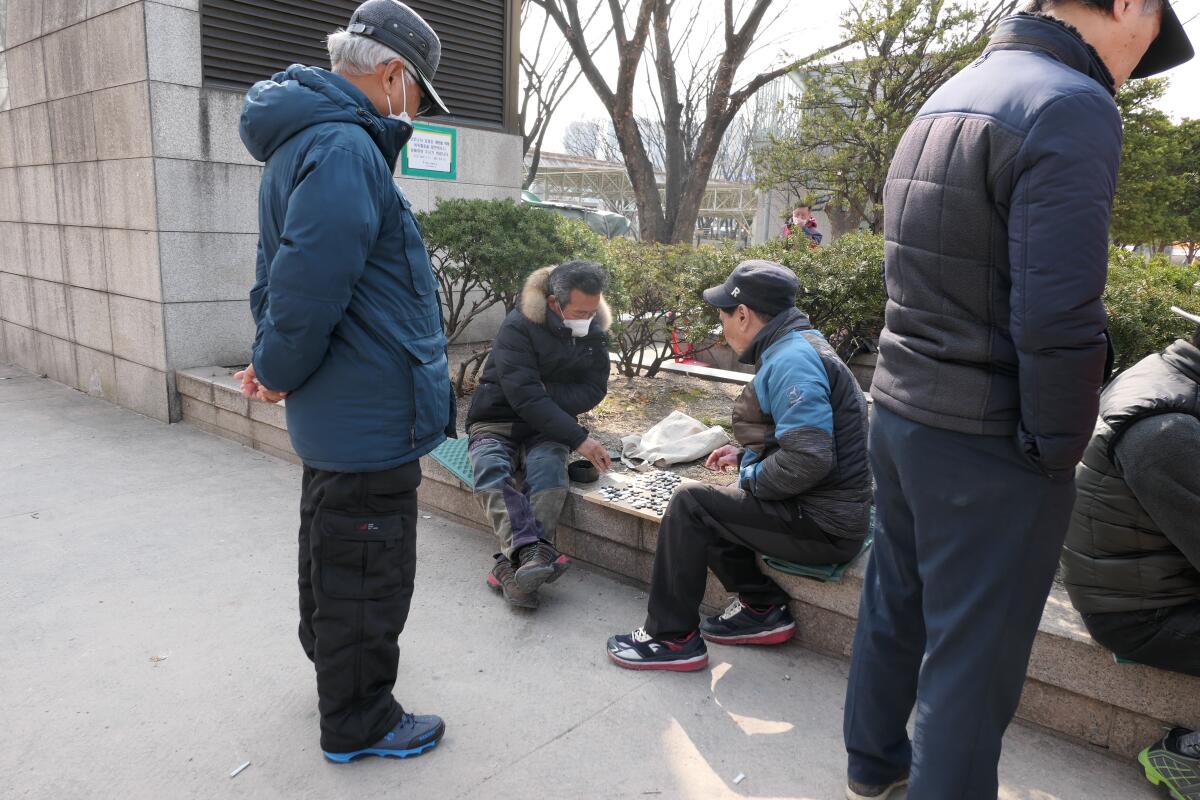
At Seoul’s Jongmyo Park, the usual crowds of seniors milling about for company, free meals and games of Go had thinned out but not disappeared. Signs taped to a wall and a pathway said Go games were banned indefinitely as a coronavirus prevention measure; regardless, half a dozen games were in full swing nearby.
Kim Young-bae, 84, wearing a flat cap and face mask and enjoying the afternoon sun on a bench in the park, was unfazed. He remembered a time after the war when an illness would hit a village and dozens would die at a time, so much so there wasn’t enough cloth to wrap the bodies.
His wife is refusing to leave their home, terrified of the virus, he said. She’s stopped going to the daytime discotheque that’s a popular pastime for seniors.
“Does it matter, whether you die locked up in your home, or walking around?” he asked. “Whenever it is, we all go some time.”
More to Read
Sign up for Essential California
The most important California stories and recommendations in your inbox every morning.
You may occasionally receive promotional content from the Los Angeles Times.
